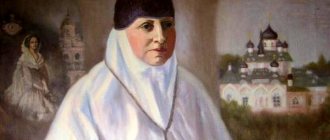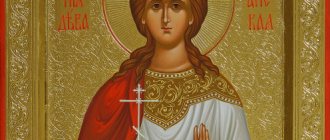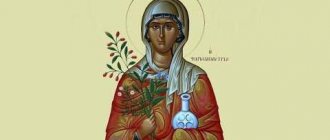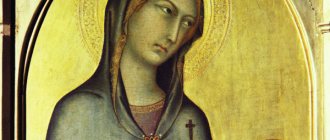Anastasia Nikolaevna Romanova is the daughter of Nicholas II, who, along with the rest of the family members, was shot in July 1918 in the basement of a house in Yekaterinburg. In the early 20s of the 20th century, numerous impostors began to appear in Europe and the United States, declaring themselves to be the surviving Grand Duchess. The most famous of them, Anna Anderson, was even recognized as the youngest daughter by some surviving members of the imperial house. Litigation lasted for several decades, but did not resolve the issue of its origin.
However, the discovery in the 90s of the remains of the executed royal family put an end to these proceedings. There was no escape, and Anastasia Romanova was still killed that night in 1918. This article will be devoted to the short, tragic and suddenly cut short life of the Grand Duchess.
Birth of a princess
You may be interested in:Methodological support is... Concept, main forms, developments and directions, pedagogical goals and objectives
Public attention was riveted to the next, already fourth, pregnancy of Empress Alexandra Feodorovna. The fact is that according to the law, only a man could inherit the throne, and the wife of Nicholas II gave birth to three daughters in a row. Therefore, both the king and the queen counted on the appearance of their long-awaited son. Contemporaries recall that Alexandra Feodorovna at this time was increasingly immersed in mysticism, inviting people to the court who could help her give birth to an heir. However, on June 5, 1901, Anastasia Romanova was born. The daughter was born strong and healthy. She received her name in honor of the Montenegrin princess, who was a close friend of the queen. Other contemporaries claimed that the girl was named Anastasia in honor of the pardon of students who participated in the unrest.
And although the relatives were disappointed by the birth of another daughter, Nikolai himself was glad that she was born strong and healthy.
Childhood
Parents did not spoil their daughters with luxury, instilling in them modesty and piety from early childhood. Anastasia Romanova was especially friendly with her older sister Maria, whose age difference was only 2 years. They shared a room and toys together, and the younger princess often wore the clothes of the elders. The room in which they lived was also not luxurious. The walls were painted gray and decorated with icons and family photographs. Butterflies were painted on the ceiling. The princesses slept in camp folding beds.
The daily routine in childhood was almost the same for all sisters. They got up early in the morning, took a cold bath, and had breakfast. They spent their evenings doing embroidery or playing charades. Often at this time the emperor read aloud to them. Judging by the memoirs of contemporaries, Princess Anastasia Romanova especially loved the Sunday children's balls at her aunt, Olga Alexandrovna. The girl loved to dance with young officers.
You may be interested in:Method for calculating the molar mass of barium sulfate
From early childhood, Anastasia Nikolaevna was distinguished by poor health. She often suffered from pain in her feet because her big toes were too crooked. The princess also had a rather weak back, but she flatly refused a strengthening massage. In addition, doctors believed that the girl had inherited the hemophilia gene from her mother and was its carrier, since even after small cuts her bleeding did not stop for a long time.
Patrons of the name
The planet Pluto brought inner strength, the number 2 added contrast, balance and duality to the origin and meaning of the name Anastasia, and added its inherent green color with harmony, responsiveness, kindness and fortitude. The water element rewarded Anastasia with tenderness and patience, but she absorbed the spirit of the water stream, so she can either be peaceful or quickly turn into a destructive storm of emotions. In such cases, you should not contradict her and bring her to the “boiling point.”
Anastasia's best friend is a pet, in particular, a Siamese cat. Such a living talisman will not only tame a person’s obstinate character, but will also add prosperity, financial wealth, devotion and willfulness to the girl’s uneven life.
Character of the Grand Duchess
From early childhood, Grand Duchess Anastasia Romanova was significantly different in character from her older sisters. She was overly active and mobile, loved to play, and was constantly playing pranks. Because of her violent temper, her parents and sisters often called her “little egg” or “shvybzik.” The latter nickname appeared due to her short stature and tendency to be overweight.
Contemporaries recall that the girl had a cheerful character and got along with other people very easily. She had a high and deep voice, she loved to laugh loudly, and smiled often. She was her closest friend to Maria, but was close to her brother Alexei. She could often entertain him for hours when he was lying in bed after illness. Anastasia was a creative person, she was constantly inventing something. At her instigation, it became fashionable at court to braid ribbons and flowers into hair.
Anastasia Romanova, according to contemporaries, also had the talent of a comic actress, because she really loved to parody her loved ones. However, sometimes she could be too harsh, and her jokes could be offensive. Her pranks were not always harmless either. The girl was also not very neat, but she loved animals and was good at drawing and playing the guitar.
Training and education
Due to her short life, the biography of Anastasia Romanova was not full of bright events. Like the other daughters of Nicholas II, the princess began home schooling at the age of eight. Specially hired teachers taught her French, English and German. But she was never able to speak the last language. The princess was taught world and Russian history, geography, religious dogmas, and natural sciences. The program included grammar and arithmetic - the girl did not particularly like these subjects. She was not known for her perseverance, did not learn the material well, and wrote with errors. Her teachers remembered that the girl was cunning, sometimes she tried to bribe them with small gifts in order to get a higher grade.
You may be interested in: What is indirect speech and how is it used?
Anastasia Romanova was much better at creative disciplines. She always enjoyed attending art, music and dance classes. The Grand Duchess was fond of knitting and sewing. As she grew up, she took up photography seriously. She even had her own album in which she kept her works. Contemporaries recalled that Anastasia Nikolaevna also loved to read a lot and could talk on the phone for hours.
Legends of origin
The history of the name Anastasia is fascinating and interesting. In Russian history and traditions, the emphasis is on the mention of saints who are revered by Orthodox and Catholics. Martyr Anastasia of Alexandria was from a family of Constantinople aristocrats of the 6th century. Emperor Justinian himself revered the believer. The martyr was widowed early and closed herself off from outside society in a monastery she founded, located near Alexandria. A few years later, the emperor lost his wife, decided to find Nastya and invite her to connect her life with him. The nun did not express a desire to return to everyday life, preferring to run away and hide in a distant cave. No one knew where Anastasia was hiding, only Abba Daniel, whom she herself initiated into the secret of her disappearance. After 28 years of reclusive life in a cave, after her death, Daniel revealed her secret to everyone.
World War I
In 1914, Princess Anastasia Romanova turned 13 years old. Together with her sisters, the girl cried for a long time when she learned about the declaration of war. A year later, according to tradition, Anastasia received patronage over the infantry regiment, which now bore her name.
After the declaration of war, the Empress organized a military hospital within the walls of the Alexander Palace. There, together with the princesses Olga and Tatiana, she regularly worked as sisters of mercy, caring for the wounded. Anastasia and Maria were still too young to follow their example. Therefore, they were appointed patronesses of the hospital. The princesses donated their own funds to buy medicine, prepared dressings, knitted and sewed things for the wounded, and wrote letters to their families and loved ones. Often the younger sisters simply entertained the soldiers. In her diaries, Anastasia Nikolaevna noted that she taught the military to read and write. Together with Maria, they often gave concerts in the hospital. The sisters carried out their duties with pleasure, diverting from them only for the sake of lessons.
Until the end of her life, Anastasia Nikolaevna fondly remembered her work at the hospital. In letters to her loved ones from exile, she often mentioned wounded soldiers, hoping that they would subsequently recover. On her table were photographs taken in the hospital.
February Revolution
In February 1917, all the princesses became seriously ill with measles. At the same time, Anastasia Romanova was the last to fall ill. The daughter of Nicholas II did not know that there were riots in Petrograd. The Empress planned to hide news about the flaring revolution from her children until the last moment. When armed soldiers surrounded the Alexander Palace in Tsarskoe Selo, the princesses and the crown prince were told that military exercises were being held nearby.
Only on March 9, 1917, the children learned about their father's abdication and house arrest. Anastasia Nikolaevna had not yet fully recovered from the illness and suffered from otitis media, so she completely lost her hearing for a while. Therefore, her sister Maria described in detail what happened on paper especially for her.
House arrest in Tsarskoe Selo
Judging by the memoirs of a contemporary, house arrest did not greatly change the measured life of members of the royal family, including Anastasia Romanova. The daughter of Nicholas II continued to devote all her free time to studying. Her father taught her and her younger brother geography and history, her mother taught her religious dogmas. The remaining disciplines were taken over by the retinue loyal to the king. They taught French and English, arithmetic, and music.
The Petrograd public had an extremely negative attitude towards the former monarch and his family. Newspapers and magazines harshly criticized the Romanovs' way of life and published offensive cartoons. A crowd of visitors from Petrograd often gathered at the Alexander Palace, who gathered at the gates, shouted offensive curses and booed the princesses walking in the park. In order not to provoke them, it was decided to reduce the walking time. I also had to give up many dishes on the menu. Firstly, because the government was cutting funding for the palace every month. Secondly, because of the newspapers, which regularly published detailed menus of former monarchs.
In June 1917, Anastasia and her sisters were completely shaved bald, as after a serious illness and taking a large number of drugs, their hair began to fall out significantly. In the summer, the Provisional Government did not prevent the royal family from leaving for Great Britain. However, Nicholas II's cousin, George V, fearing unrest in the country, refused to accept his relative. Therefore, in August 1917, the government decided to send the family of the former tsar into exile in Tobolsk.
BASED ON THE HUMAN BRAIN
The brain is not a factory for producing thoughts. The activity of the brain cannot be explained from the point of view of a materialistic, rational worldview. Without faith and love for God, without Divine revelation, all attempts to “disobjectify” the human brain, the human soul will only have a grossly blasphemous character. Man is God's creation. And all the more ungodly is the attempt to create some kind of laboratory “likeness” of a person, his soul. This is a clear challenge to God. This is outright Satanism, which today is becoming “justified” from the point of view of modern “academic” science.
But this Satanism, like any evil deceit, is hidden behind good intentions. Recently, all transhumanist projects, attempts to dissect the human soul for the sake of its further subjugation and free manipulation of it, are covered up by medical tasks. Like, if we understand the brain, we will know how to treat it. Of course, one cannot deny scientific knowledge in the field of neurophysiology and psychology, if this knowledge does not claim to be a complete explanation of human nature without accepting God, without understanding that man was created by the Lord in His image and likeness. Attempts to imagine a person in the form of some kind of leathery physiological bag, driven by instincts and reflexes, are, at a minimum, very far from science. And they are a wild profanation.
But it seems that today profanity is recognized as “new knowledge”, and Satanism is recognized as a revelation from above.
For now, we are simply not ready to accept chips, since too large a percentage still doubts whether the comrades who are ready to offer us these chips are on the right path. There are still quite a few people who don’t really believe that man is just one of the animals that needs control and management by some supermen who intend to fully understand how this human brain works and how they can manipulate.
It is strange and terrible that today unspiritual thinking and a materialistic view of the world penetrate even into the Church. And this is confirmed even by the current epidemic, in the fight against which sometimes even on the part of the clergy, hopes are primarily placed not on God, not on the fact that through repentance the Lord can deliver us from any virus. Hopes are placed on the vaccine, on a purely physiological, biochemical effect, without reminders of repentance and God's omnipotence. And what kind of repentance is there, when today there is a loud call to recognize the “Ekaterinburg remains” as soon as possible, and not to ask God for forgiveness in the terrible sin of murdering the Anointed One of God and His Holy Family, in the unrepentant sin that lies on all of us people. No vaccine will help us if we continue to go against God and hope for some “new knowledge”, for new scientific achievements built on a flawed anti-Christian worldview.
The entire text
_______________________________________________________
Today, the leading world powers are unable to offer anything to the world in spiritual terms. Because everything has already been proposed. And this proposal was made two thousand years ago by the Lord Himself, who came to earth for our salvation. This sentence is stated in the New Testament. The Lord has given us a way of salvation. And Russia is the last world Power that is called upon to lead all of humanity along this gospel path. Where can America, China or Germany take us? Do they have God's blessing for their great apostolic service? Do they have this spiritual strength, this great missionary experience? Does any other country besides Russia have such a great army of saints? Is there anywhere else such a people who have endured much suffering, who have repeatedly sacrificed themselves for the salvation of other peoples, following the eternal call of Divine love?
Chinese leader Xi Jinping argues that humanity has a common destiny. In apocalyptic terms, he's probably right. We all face the end of our history on earth. And everyone awaits the Second Coming of our Lord Jesus Christ. And the Last Judgment awaits everyone. We will all appear at the Last Judgment. And Xi Jinping, and Biden, and Merkel, and Putin, and each of us. And we don’t know what will happen there. Where we will go after this Judgment, we do not know. Some will go to hell forever, and some will go to the Kingdom of Heaven. But we know that the meek ones will inherit the earth, which today the world’s builders of hell on earth are trying to take over and digitize. Our “destinies” will, of course, be different. It probably depends on how much we love God and our neighbor. Christian love brings us closer to Christ, and all evil and deceit brings us closer to the devil. Whom we serve, we will follow.
Russia has always served God. This is the very meaning of Russia's existence. Our Holy Rus' is the House of the Most Holy Theotokos. Why should we listen to some worldly nonsense of those who themselves do not know God, to whom the Church is not a Mother, and God is not a Father?
A lot now, in these days, in these moments in the world depends on the will of our people. From the will and desire of the Russian people. If we are kindled with the desire to be with God, if we turn to Him, if we decide to be with Christ, Rus' will rise again, and many people all over the world will find joy and the opportunity to take the path of salvation and guide their children on this path.
The entire text
______________________________________
Link to Tobolsk
In August 1917, the royal family, in the strictest secrecy, was sent by train, first to Tyumen. From there they were transported to Tobolsk on the steamer "Rus". They were supposed to be accommodated in the former governor's house, but it was not prepared before their arrival. Therefore, all family members lived on the ship for almost a week and only then were transported under escort to their new home.
The Grand Duchesses settled in a corner bedroom on the second floor on camp beds that they brought with them from Tsarskoye Selo. It is known that Anastasia Nikolaevna decorated her part of the room with photographs and her own drawings. Life in Tobolsk was quite monotonous. Until September they were not allowed to leave the premises of the house. Therefore, the sisters, together with their younger brother, looked at passers-by with interest and studied. Several times a day they could go for short walks outside. At this time, Anastasia loved to collect firewood, and in the evenings she sewed a lot. The princess also took part in home performances.
In September they were allowed to attend church on Sundays. Local residents treated the former monarch and his family well; fresh food was regularly brought to them from the monastery. At the same time, Anastasia began to gain a lot of weight, but she hoped that over time, like her sister Maria, she would be able to return to her previous shape. In April 1918, the Bolsheviks decided to transport the royal family to Yekaterinburg. The emperor and his wife and daughter Maria were the first to go there. The other sisters and their brother had to stay in the city.
You may be interested in: Unusual adjectives: examples, compliment adjectives
The photo below shows Anastasia Romanova with her father and older sisters Olga and Tatyana in Tobolsk.
GOD'S ANOINTED
My homeland, you've gone crazy! Wake up, Russia! - our holy ancestors call to our hearts. Wake up, Russian people! – many, many who loved Christ and Christ’s Rus' on earth and with this divine love went into another world are waking us up from heaven. Those who were with us just yesterday. Hear their heavenly voice!
Russia, the holy Tsar himself is praying for you, calling you to Christ! Do we hear this voice of our holy King? Or it is drowned out by the roar of a mad crowd. This crowd roars on the Internet and WhatsApp, in the media and debilitation. This crowd, among which there are many familiar faces, snouts and creepy faces. And these snouts are many, many centuries old. Those who rise up at the Royal Procession of the Cross, in memory of the holy Royal Martyrs, who created “Matilda” are the dirty children of the spiritual crucifiers of our Lord Jesus Christ.
Why are you puffing up, you horned ones! Your anger and yourself will come to an end if you do not repent. You will die, damned enemies of the Church and our Fatherland! And Russia, tormented by you, will not die, but will live. Because the Russian people pray to God, our people pray quietly, not for show. With tears he prays to Christ our God. And the Lord hears these prayers. The Lord and His Most Pure Mother love Rus'. And today, on this Royal Night, on this Russian Easter, the holy Sovereign Tsar Martyr Nicholas himself, with his Holy Family and with all the Saints, leads us in the great procession of the Cross. Royal Procession of the Cross. Penitential.
May Rus' rise again! And they will lavishly attack her!
The entire text
____________________________________________
Relocation to Yekaterinburg and the last months of life
It is known that the attitude of the guards of the house in Tobolsk towards its residents was hostile. In April 1918, Princess Anastasia Nikolaevna Romanova and her sisters burned their diaries, fearing searches. Only at the end of May did the government decide to send the remaining Romanovs to their parents in Yekaterinburg.
Survivors recalled that life in the house of engineer Ipatiev, where the royal family was housed, was quite monotonous. Princess Anastasia, together with her sisters, was engaged in everyday activities: sewing, playing cards, walking in the garden next to the house, and in the evenings reading church literature to her mother. At the same time, girls were taught to bake bread. In June 1918, Anastasia celebrated her last birthday; she turned 17 years old. They were not allowed to celebrate it, so all family members played cards in the garden in honor of this and went to bed at the usual time.
Execution of a family in Ipatiev's house
Like other members of the Romanov family, Anastasia was shot on the night of July 17, 1918. It is believed that until recently she was unaware of the guard’s intentions. They were woken up in the middle of the night and ordered to urgently go down to the basement of the house because of the shooting that was taking place in the streets nearby. Chairs were brought into the room for the empress and the sick crown prince. Anastasia stood behind her mother. She took with her her dog Jimmy, who accompanied her during her exile.
It is believed that after the first shots, Anastasia and her sisters Tatyana and Maria were able to survive. The bullets could not hit because of the jewelry that was sewn into the corsets of the dresses. The Empress hoped that with their help they would, if possible, be able to buy their own salvation. Witnesses to the murder said that it was Princess Anastasia who resisted the longest. They could only wound her, so after that the guards had to finish off the girl with bayonets.
The bodies of the royal family members were wrapped in sheets and taken out of the city. There they were first doused with sulfuric acid and thrown into the mines. For many years the burial place remained unknown.
Mascot
The stones carry the secret of their origin, and are also “luck” for the people inherent in them. The name Anastasia is associated with the malachite stone.
Cunning and wisdom are hidden within a talisman that is solid by nature; it is these parameters that help one emerge victorious from difficult life situations and instill energy in a person. The medicinal properties of malachite are aimed at curing pulmonary and heart diseases, reducing the manifestation of an allergic reaction, and taming an obstinate character.
The stones noted in the following list are also considered Nastya’s unspoken amulets:
- chrysoprase;
- emerald;
- fluorite;
- zircon;
- fire opal;
- cornelian.
The detailed properties of amulets, which play an important role in the origin of the name Anastasia and the formation of her personal qualities, will be described below.
- Chrysoprase attracts success and guarantees positive results in new endeavors. The wearer of such a talisman need not be afraid of the evil eye and the envy of others. It is important to remember that such an abundance of success and lightning-fast luck will smile only on people with an open soul and pure hands.
- Emerald will help sincere Nastenkas forget about melancholy, and will bring only misfortune to ladies who are deceitful by nature.
- If you want to put your thoughts in order, you need to purchase fluorite, which is an activator of an analytical mindset and a calmer of nerve cells.
- For optimism, it is recommended to turn to zircon; it is this stone that charges you with positivity, attracts wealth, helps you make progress in love, and be physically resilient.
- Fire opal has great healing properties, strengthening the immune system, making you forget about colds and insomnia. Girls who associate the origin of the name Nastya with mysticism, are afraid of the evil eye and witchcraft, always have a fire opal in their jewelry chest. This time-tested protection leaves no doubt.
- Women with frequent mood swings, who have problems communicating with the outside world, are advised to carry carnelian with them, it will prevent emotions from spilling out at the wrong moment.
The appearance of the false Anastasius
Almost immediately after the death of the royal family, rumors about their salvation began to appear. Over the course of several decades of the 20th century, more than 30 women claimed to be the surviving Princess Anastasia Romanova. Most of them failed to attract attention.
The most famous impostor posing as Anastasia was the Polish woman Anna Anderson, who showed up in Berlin in 1920. Initially, due to her external resemblance, she was mistaken for the surviving Tatyana. To establish the fact of kinship with the Romanovs, she was visited by many courtiers who were well acquainted with the royal family. However, they did not recognize her as either Tatiana or Anastasia. However, the trials lasted until Anna Anderson’s death in 1984. Essential evidence was the curvature of the big toes, which both the impostor and the deceased Anastasia had. However, Anderson’s origins could not be accurately determined until the remains of the royal family were discovered.
Discovery of remains and their reburial
The story of Anastasia Romanova, unfortunately, did not receive a happy continuation. In 1991, unknown remains were discovered in Ganina Yama, which allegedly belonged to members of the royal family. Initially, not all the bodies were found - one of the princesses and the crown prince was missing. Scientists came to the conclusion that they could not find Maria and Alexei. They were discovered only in 2007 near the burial place of the remaining relatives. This discovery put an end to the story of numerous impostors.
Several independent genetic examinations determined that the remains found belonged to the emperor, his wife and children. Thus, they were able to conclude that there could be no survivors of the shooting.
In 1981, the Russian Church Abroad officially canonized Princess Anastasia along with the rest of the deceased family members. In Russia, their canonization took place only in 2000. Their remains, after all the necessary research, were reburied in the Peter and Paul Fortress. On the site of Ipatiev’s house, where the execution took place, the Temple on the Blood is now built.
Source
The story of the martyr
In the Orthodox interpretation there is also a mention of the name Anastasia. The meaning and origin of the name is connected with the legend of the martyr Anastasia Rymlyanina. The girl was an orphan from birth and was raised by nuns. Faith in Christ led Anastasia to death. In Rome, she was subjected to terrible torture; after the uprising of the Romans, forgiving such violence against a Christian woman, the torturers beheaded her. In legend, Anastasia is called the patroness of livestock.
The meaning of the name, the origin of the name Nastenka (full - Anastasia) is also mentioned in Russian fairy tales, where the girl thus named is destined to be the smartest and most beautiful. The Russian direction of popularizing this name gives only positive characteristics to its bearer, without a drop of anger and cunning.










